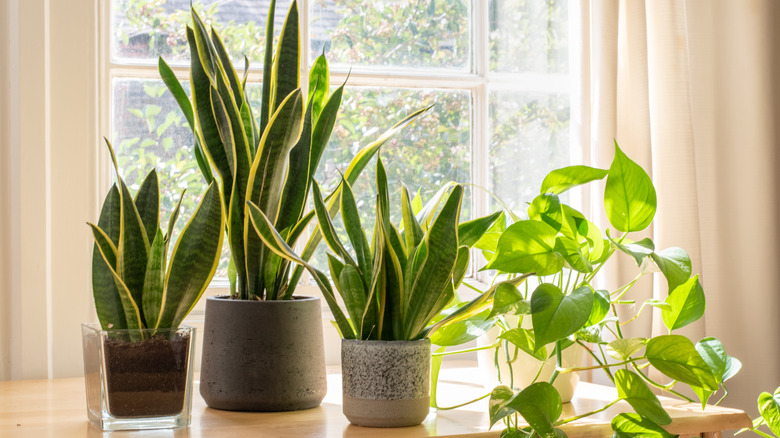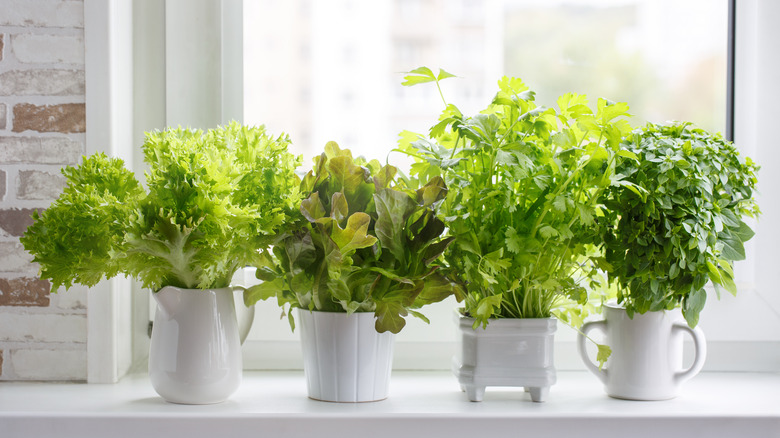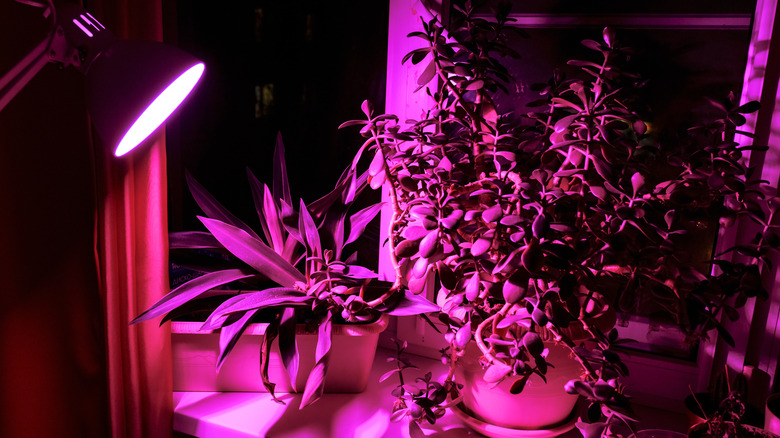The Side Of Your Home That Houseplants Will Flourish On
When shopping for a home or new apartment, most plant enthusiasts have their compass app at the ready to determine what windows will be best for their precious plants. The direction a window faces will indeed determine how much light will be available and what strength it will be. Living in a space that has windows facing each direction is ideal, but ultimately less common for those in urban areas. Nevertheless, no matter which hemisphere you call home, east-facing windows are typically the best direction for the majority of common houseplants.
East-facing windows provide optimal conditions for many indoor plants due to the gentle morning sunlight they receive. This exposure offers a balance of brightness and warmth without the intensity of harsh afternoon sun. Most indoor plants, originating from tropical regions with filtered sunlight, thrive in these conditions. The morning sun promotes photosynthesis and growth while preventing the risk of scorching or overheating, which can occur in west or south-facing windows. Additionally, east-facing light supports a more consistent and gradual temperature change throughout the day, benefiting the overall health and vitality of houseplants by mimicking their natural habitat.
Perfect plants for east-facing windows include pothos, snake plants, peace lilies, and ferns. These shade-loving plants benefit from the gentle morning sunlight and moderate temperatures. Moreover, their adaptability to lower light levels makes them well-suited for the conditions provided by east-facing windows in homes.
Benefits of south and west facing windows
While east-facing windows are ideal for many plants, there are benefits to windows that face other directions, too. South-facing windows offer abundant sunlight, making them ideal for plants that crave intense illumination. However, the benefits come with risks. The direct and strong sunlight can lead to scorching or overheating, demanding careful monitoring and potential shading during peak hours. Plants like succulents, cacti, and sun-loving herbs such as rosemary and lavender thrive in south-facing windows due to their ability to withstand intense light and warmth. These plants benefit from the extended sunlight exposure, promoting robust growth and vibrant blooms. Careful consideration of plant preferences and occasional protection from excessive sunlight with sheer curtains or other window treatments can make south-facing windows suitable for a diverse array of sun-loving species.
Additionally, west-facing windows offer afternoon sunlight, presenting both benefits and some risks for indoor plants. While the exposure can be intense, it tends to be less harsh than the direct midday sun from south-facing windows. The warmth and brightness in the afternoon can stimulate robust growth, flowering, and fruiting in certain plants. However, there's a risk of overheating and dehydration, requiring careful selection of heat-tolerant species. Plants like succulents, aloe vera, and jade plants thrive in west-facing windows, as they can withstand the moderate intensity of afternoon sunlight. Additionally, flowering plants such as geraniums can benefit from the extended light duration, promoting vibrant blooms while managing the potential challenges of western exposure.
North facing windows can present challenges
North-facing windows in the northern hemisphere can pose challenges for indoor plants due to limited sunlight exposure. These windows receive the least direct sunlight, resulting in lower light levels throughout the day. For most plants, especially those originating from tropical or subtropical regions, this lack of sunlight can hinder photosynthesis, stunting growth and affecting overall health. Insufficient light may lead to leggy, elongated stems as plants stretch in search of more light, compromising their structural integrity.
To address the challenges of north-facing windows, plant enthusiasts can choose low-light-tolerant species that thrive in shaded conditions. Plants like ZZ plants, snake plants, and pothos are well-suited for these environments. However, it's crucial to monitor their growth closely and ensure they receive adequate care to compensate for the limited natural light. If north-facing windows are all you've got at home, you can consider supplemental help for your plants by providing artificial light sources, such as fluorescent or LED grow lights. These products can supplement the available natural light and support plant growth. Additionally, rotating plants periodically to expose different sides to the limited sunlight can help ensure more balanced development.
Ultimately, while north-facing windows may not be the first choice for many types of indoor plants, strategically selecting your plants and providing proper care can create a thriving indoor garden. Understanding the specific light requirements of your chosen plants and adapting your care routines accordingly can help you cultivate gorgeous greenery even in less-than-ideal lighting conditions.


